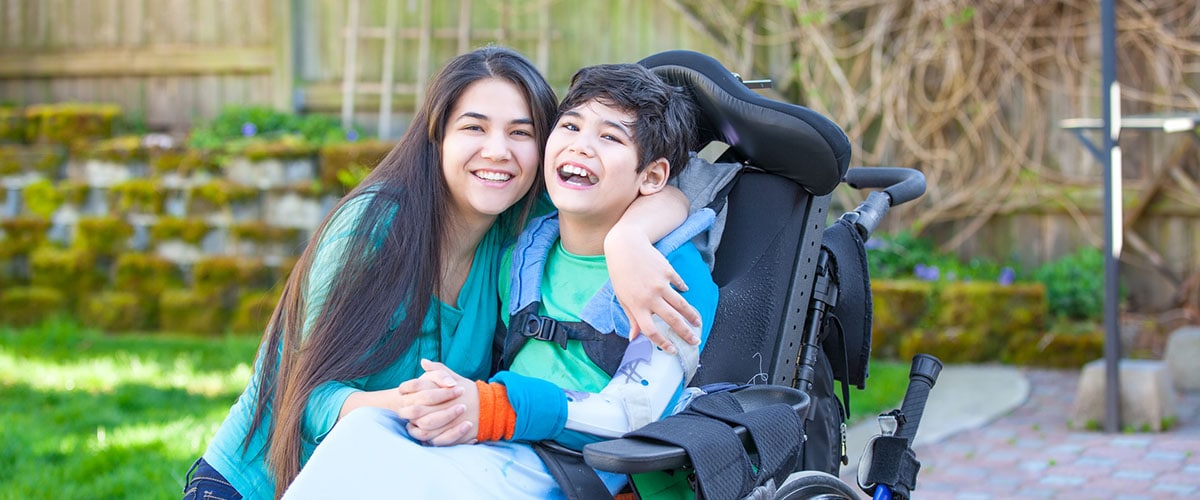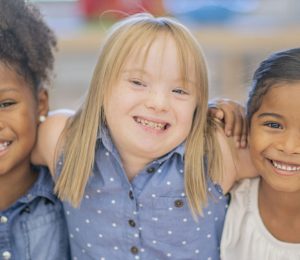Brenda Agnew is a Halton Catholic School Board Trustee, former director of Parent Advocacy Link (PAL) for parents of children with neurological disorders, and the mother of a child with athetoid cerebral palsy.
When your child encounters somebody who has a disability, or seems “different”, it can be difficult to know the best way to start a discussion. How you respond will shape how your child sees people with disabilities in the future.
If you welcome their questions and are honest in your responses, you can use these early opportunities to open up discussions that foster inclusion and acceptance.
Tips for Talking About Disabilities with Your Kids
1. Encourage your child to approach people with disabilities and ask them questions. People are usually happy for the opportunity to educate and enlighten an inquisitive child. It is the best way to dispel myths and falsehoods, and more important: children will not learn to fear people with disabilities.
2. Be age-appropriate in your discussions. For example, if your child has a classmate with a Cochlear implant, you can tell a 5-year-old that it is something that helps their friend hear, but with a 10-year-old, you can get into more specific details about how it works.
3. Focus on how a person with a disability is the same as them, but they just do things differently. Kids are looking for similarities rather than differences. Teach your children to be patient if they meet someone with a disability. Sometimes it can be hard to understand what a person with a disability is saying, or it could take them longer to do things, so encourage your children to give him or her extra time to speak or move.
Explain to your children that having a disability doesn’t mean not going to school, making friends, or doing things they enjoy. But they may have to do these things a little differently or with some help. Just like your children, more than anything else, kids with disabilities want to fit in with their classmates, make friends, and be liked.
4. Bring your kids to attend events where people of all abilities are involved and having fun together. The Parapan Am games in Toronto, for example, showed the world how amazing and accomplished people with disabilities are. Children were cheering on athletes who are blind, deaf, and in wheelchairs, just like they would any other athlete representing their country. Consider taking your child to a sledge hockey match at a local arena, have them volunteer as a buddy to a child with a disability at school, or go as a family to watch a wheelchair basketball team.
5. Remember that kids hear and see everything that we do, and they learn by example. Be aware of your language when describing people with disabilities. Using words like “weird”, “cripple”, “strange”, or the dreaded R-word, “retarded”, will make kids think it is acceptable to also refer to people this way.
6. There are opportunities to talk with your child about people with disabilities you may not have realized. Remember Nemo? He had one fin that was smaller and not functional. What a great way to help a young child relate to someone living with a disability. What about Frozen and Elsa? So many young girls love Elsa, and she also lived with differences.
Take the time to talk to your children about how similarities and differences make us all unique. No two snowflakes are the same, and no two people are the same. How boring would life be if everyone was the same? Patience, understanding, and compassion are values to instill in all children.
Books and Visual Aids That Can Help Foster Discussion
Danny and the Merry Go Round by Nan Holcomb. This is the story of Danny, who has cerebral palsy. Danny visits the park with his mother and watches other children playing on a playground. He makes friends with a young girl after his mother explains cerebral palsy to her and points out that it is not contagious.
Having a Brother like David by Cindy Dolby Nollette and Others. This is a story about Marty’s brother, David, who is autistic. Marty explains that David looks a lot like other children but has special needs.
Russ and the Fire House by Janet Elizabeth Rickert. Russ is a young boy with Down syndrome whose everyday life experiences and not his disability, are the subject of books in this series. Russ goes “on-duty” with his uncle, a fireman. Their shift includes a full inspection of the fire equipment, including keeping it clean. He also encounters Spark, the firehouse dog. At the end of this exciting day, all the firemen thank Russ for his hard work and invite him back for another visit.
I’m Like You, You’re Like Me: A Book About Understanding and Appreciating Each Other by Cindy Gainer. This book for preschoolers and elementary-age children explores acceptance and respect for people with all sorts of physical differences.
You can get more helpful information about disabilities from March of Dimes Canada and learn about programs and support for people with disabilities.


